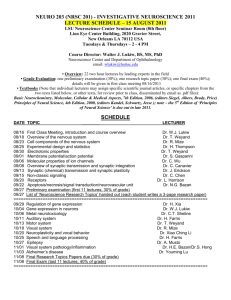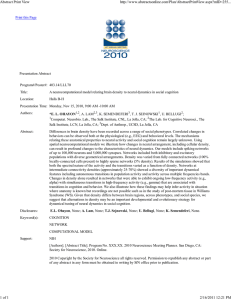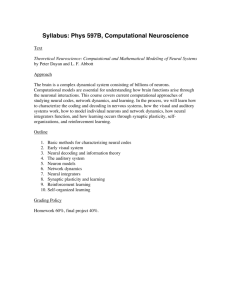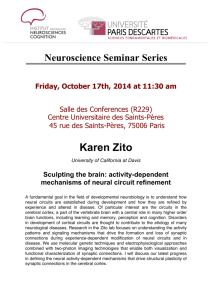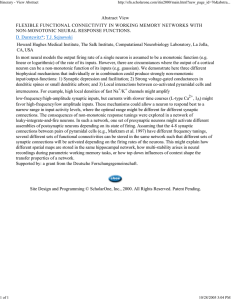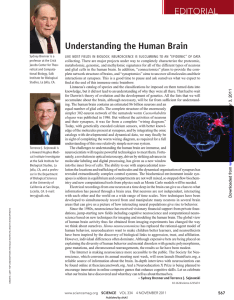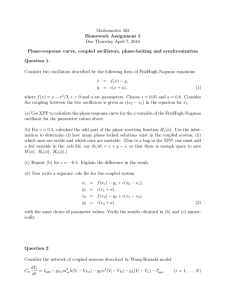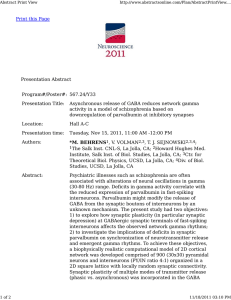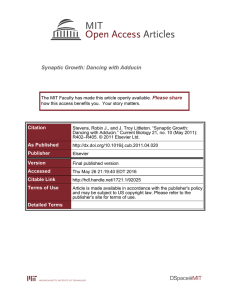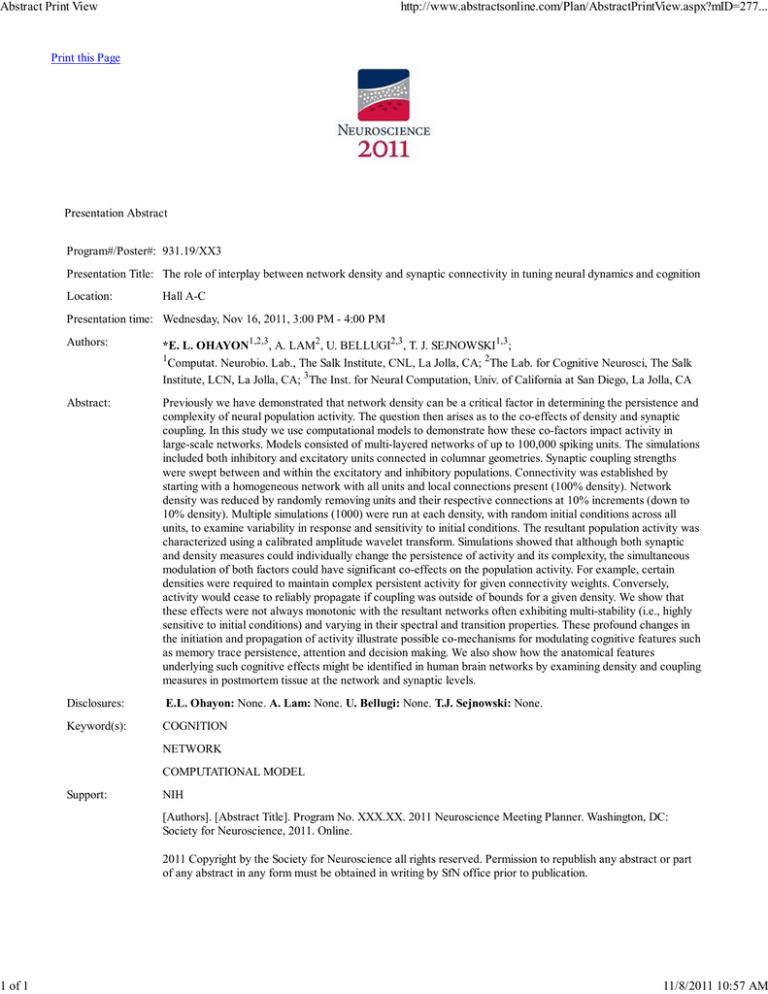
Abstract Print View
1 of 1
http://www.abstractsonline.com/Plan/AbstractPrintView.aspx?mID=277...
Print this Page
Presentation Abstract
Program#/Poster#: 931.19/XX3
Presentation Title: The role of interplay between network density and synaptic connectivity in tuning neural dynamics and cognition
Location:
Hall A-C
Presentation time: Wednesday, Nov 16, 2011, 3:00 PM - 4:00 PM
Authors:
*E. L. OHAYON1,2,3, A. LAM2, U. BELLUGI2,3, T. J. SEJNOWSKI1,3;
1
Computat. Neurobio. Lab., The Salk Institute, CNL, La Jolla, CA; 2The Lab. for Cognitive Neurosci, The Salk
Institute, LCN, La Jolla, CA; 3The Inst. for Neural Computation, Univ. of California at San Diego, La Jolla, CA
Abstract:
Previously we have demonstrated that network density can be a critical factor in determining the persistence and
complexity of neural population activity. The question then arises as to the co-effects of density and synaptic
coupling. In this study we use computational models to demonstrate how these co-factors impact activity in
large-scale networks. Models consisted of multi-layered networks of up to 100,000 spiking units. The simulations
included both inhibitory and excitatory units connected in columnar geometries. Synaptic coupling strengths
were swept between and within the excitatory and inhibitory populations. Connectivity was established by
starting with a homogeneous network with all units and local connections present (100% density). Network
density was reduced by randomly removing units and their respective connections at 10% increments (down to
10% density). Multiple simulations (1000) were run at each density, with random initial conditions across all
units, to examine variability in response and sensitivity to initial conditions. The resultant population activity was
characterized using a calibrated amplitude wavelet transform. Simulations showed that although both synaptic
and density measures could individually change the persistence of activity and its complexity, the simultaneous
modulation of both factors could have significant co-effects on the population activity. For example, certain
densities were required to maintain complex persistent activity for given connectivity weights. Conversely,
activity would cease to reliably propagate if coupling was outside of bounds for a given density. We show that
these effects were not always monotonic with the resultant networks often exhibiting multi-stability (i.e., highly
sensitive to initial conditions) and varying in their spectral and transition properties. These profound changes in
the initiation and propagation of activity illustrate possible co-mechanisms for modulating cognitive features such
as memory trace persistence, attention and decision making. We also show how the anatomical features
underlying such cognitive effects might be identified in human brain networks by examining density and coupling
measures in postmortem tissue at the network and synaptic levels.
Disclosures:
E.L. Ohayon: None. A. Lam: None. U. Bellugi: None. T.J. Sejnowski: None.
Keyword(s):
COGNITION
NETWORK
COMPUTATIONAL MODEL
Support:
NIH
[Authors]. [Abstract Title]. Program No. XXX.XX. 2011 Neuroscience Meeting Planner. Washington, DC:
Society for Neuroscience, 2011. Online.
2011 Copyright by the Society for Neuroscience all rights reserved. Permission to republish any abstract or part
of any abstract in any form must be obtained in writing by SfN office prior to publication.
11/8/2011 10:57 AM


